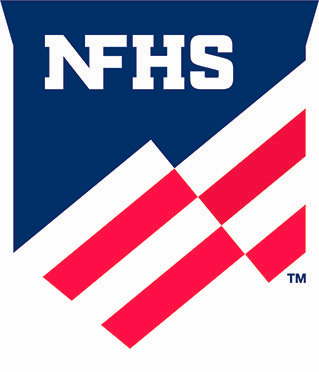Football field maintenance during the winter months
The holidays are finally in the rearview. Basketball and other indoor sports are in full swing. All that—coupled with the winter weather—can mean only one thing: It is time to start thinking about your football field.
If that sounds a little soon, consider this. Spring is on its way and in many jurisdictions, football fields will be hosting lacrosse and soccer, in addition to any football tryouts or preseason practices. It just makes sense to evaluate the condition of those facilities during the winter, to get any necessary repairs done before you have to work around game schedules. Here’s how to get started.
The View from the Top Climb to the highest row of your bleachers and look down at the field. What do you see?
Climb to the highest row of your bleachers and look down at the field. What do you see?
“If you have a natural grass football field, you want to look for areas of wear,” says Paul Arcella with CSR Heavy & Athletic in Deerfield Beach, Florida. “They might be in different spots, depending on what other sports you’re hosting, whether that means soccer, lacrosse, field hockey, or anything else.”
Discoloration on the field, something else you might see from a height, can be a sign of irregular watering, weed infiltration, or invasive pests.
If there has been a recent rain, or if you can turn on sprinklers, look for areas of poor drainage. This is another problem, since areas that become muddy or rutted can result in further damage to fields and can also cause injuries to athletes.
Taking the Field
The second part of your winter inspection will be performed on the field itself. Walk back and forth, scanning for signs of weeds, pests, or other problems that might be missed from a distance. You want the field to look uniform throughout; however, it is also essential to be aware of how everything feels underfoot, particularly areas that might be harder or spongier than the rest. Remember that ideally, the playing surface should be uniform.
Use your phone to take pictures of any areas of concern and make notes to yourself about those. However, say all the experts, don’t get distracted by texts, e-mails, or calls, as this could cause you to miss a problem in the making; catching that problem early could mean the difference between a minor issue and an expensive repair that takes your field out of commission.
“Don’t wait for a small problem to become a big problem,” cautions John Schedler of Baraka Sport in Fort Worth, Texas. “Some issues, if dealt with in reasonable time, can save a field from needing major renovation or replacement.”
Synthetic Fields
Pre-season inspections are just as important on synthetic fields, adds Arcella. Only in this case, you should take the high bleacher position and look at the overall field. Places where lines look wavy or where the field seems bumpy or uneven will warrant closer inspection. As you walk the field, check for other issues such as loose seams.
“Look for places where the fiber blades are bent over or where they are breaking off and exposing more of the infill,” Arcella notes. “Look also for anywhere players are running on the infill, rather than on the turf itself. You might also see an accumulation of infill and fiber at the perimeter edges after a rainfall.”
“Another sign of a problem with a synthetic field is water standing anywhere,” adds Schedler. “That is a sign that something is wrong, and it needs to be addressed.”
In all cases, with all field problems, a qualified professional should be consulted before any D-I-Y repairs are attempted.
“A competent contractor will evaluate a field, whether it is natural or synthetic,” says Arcella. “They will look at the problems and give you an estimate on the useful life it has left, as well as a replacement plan.”
Replacing the field might sound like the last thing you want to do, and the reasons for that usually start with the cost and include the fact that the field needs to stay in use. The problem, say field builders, is that it cannot do so forever.
“Fields have a finite life,” says Schedler. “You need to know that, and to begin thinking of, and planning for, replacement as soon as it is installed.”
Regular winter maintenance does help fields of both types stay in good condition longer; however, nothing can outlast time. Even synthetic fields, which do not require weeding, fertilizing, or mowing, will not stay in good condition forever, and at some point, will need repair and eventually, replacement.
» ALSO SEE: Challenges of hiring and retaining coaches
“We see new natural turf fields in poor condition within a year or two after installation due to a lack of proper maintenance,” says Arcella. “We see that on synthetic turf as well, even though we tell our synthetic field customers that low maintenance does not mean no maintenance.”
Don’t Forget the Amenities
Keeping a field updated means performing updates to other aspects. Check all bleachers and make sure they are in good repair. Fencing should also be inspected and all gates checked. If there is a field irrigation system, turn it on and make sure all sprinkler heads are operating, and that they are turned the right way. Water should be directed onto the field; it should not be falling onto neighboring structures such as your running track, team seating areas, spectator areas or anywhere other than the primary playing area.
Turn on the lights and make sure they are all operational, with all fixtures lighting as planned, and no fixtures aimed any place other than the primary playing area. Check goals, practice equipment and all portable equipment. If anything needs to be replaced, the winter months are the time to order it.
Full information on sports field design and construction, as well as other resources, can be accessed by contacting the American Sports Builders Association (ASBA), which exists to promote the highest standards of design, construction and maintenance. The publication, Sports Fields: A Construction and Maintenance Manual, may be of use in helping develop maintenance protocols that result in years of enjoyment. Information is available at the website, www.sportsbuilders.org.





